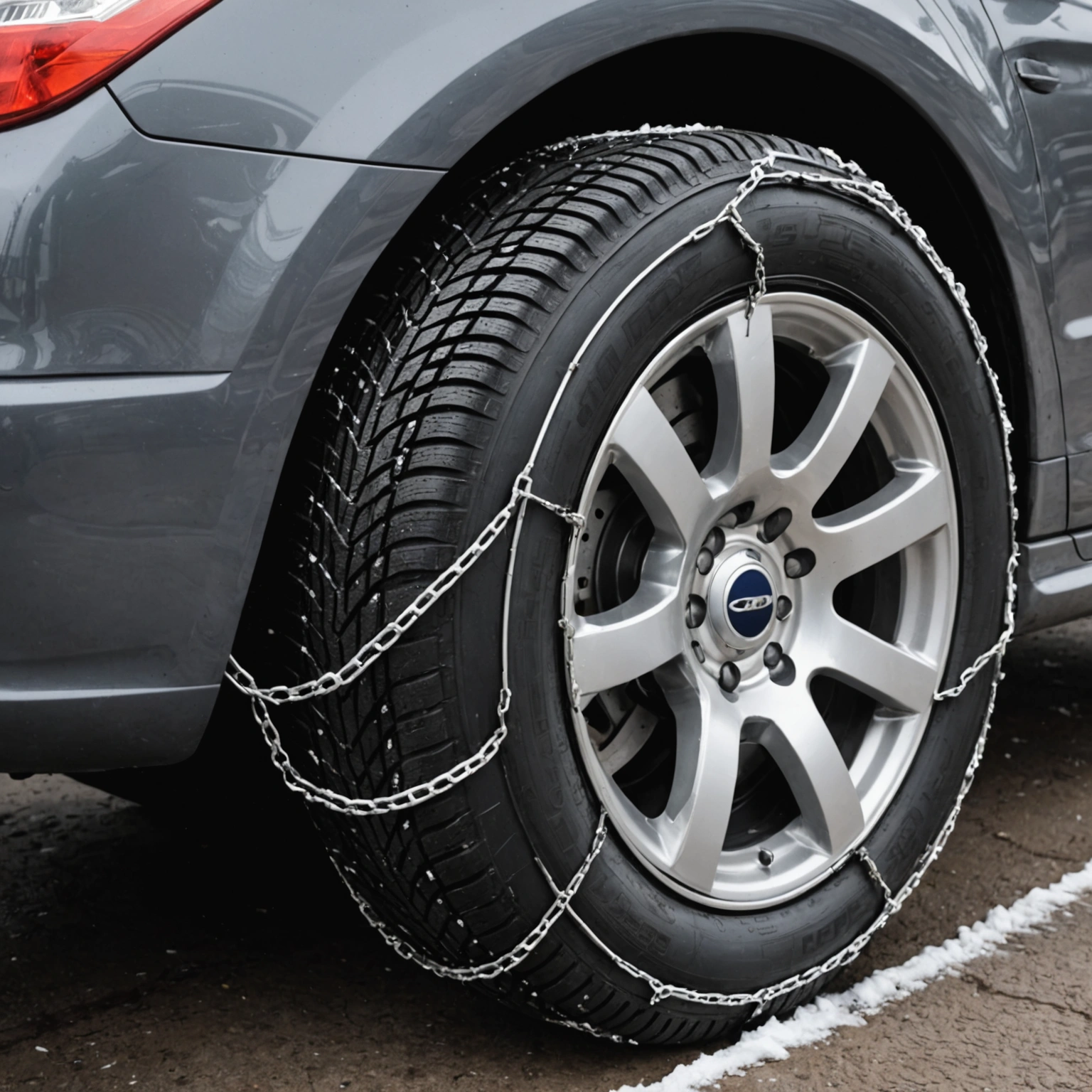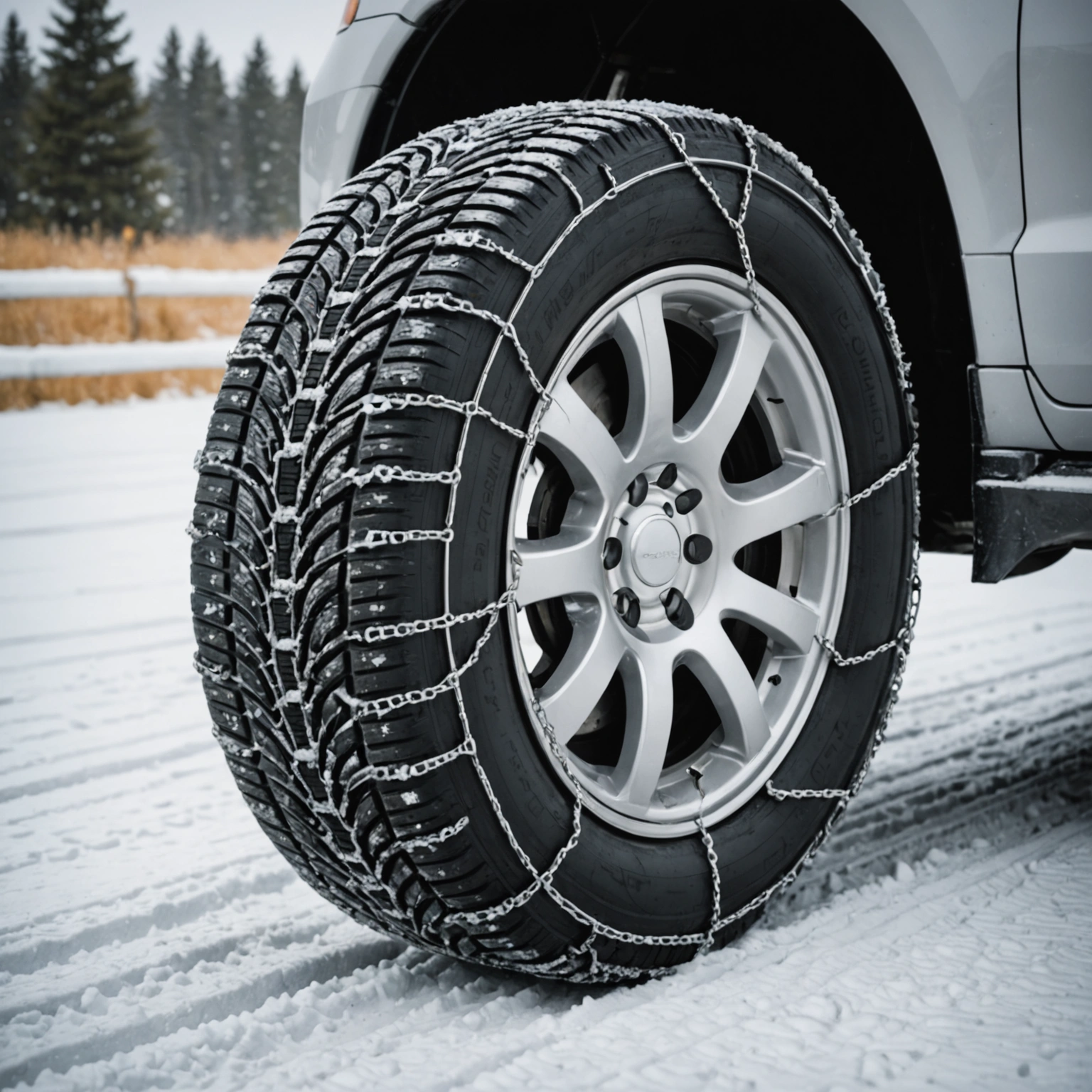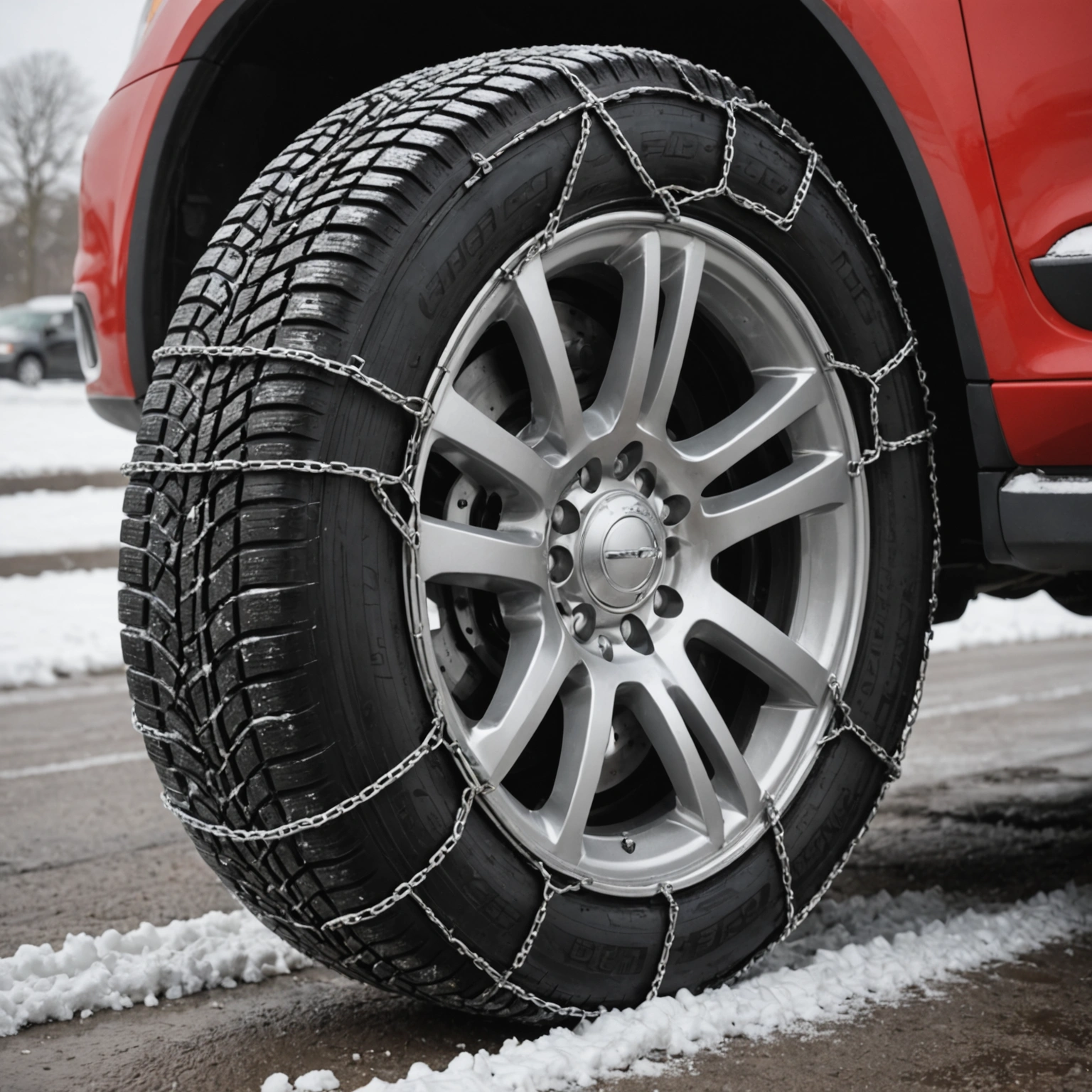**Understanding How Tire Chains Work: A Guide to Enhanced Traction**
When winter weather hits, driving conditions can become hazardous due to snow and ice-covered roads. One of the most effective tools for maintaining traction in such conditions is the use of tire chains. But how exactly do tire chains work, and why are they so beneficial? Let’s explore the mechanics behind tire chains and how they improve vehicle performance in winter driving scenarios.

### What Are Tire Chains?
Tire chains are devices made of metal links that are wrapped around the tires of a vehicle. They are designed to provide additional grip by increasing the surface roughness and friction between the tires and the road surface. Tire chains are typically used in snowy or icy conditions where standard tires may struggle to maintain traction.

### How Do Tire Chains Improve Traction?
**1. Increasing Surface Grip:**

On icy or snow-covered roads, the smooth rubber tires tend to slip because they lack enough friction to grip the slippery surface. Tire chains create a rough, textured surface on the tire’s contact patch, significantly increasing friction. This enhanced grip helps prevent slipping and skidding.
**2. Disrupting Ice and Snow Layers:**

Ice and packed snow can be slick and uniform, making it difficult for tires to “bite” into the surface. The metal links of tire chains penetrate through the snow and ice layer, reaching the underlying pavement or more compacted snow, providing better anchoring points.
**3. Improving Braking and Steering:**
With better grip, your vehicle can accelerate, brake, and steer more effectively. This increased control reduces the risk of accidents in winter conditions.
### How Do Tire Chains Work in Practice?
When installed correctly, tire chains form a lattice of metal links that make direct contact with the road surface. As your vehicle moves:
– The chains’ metal links rub against the snow and ice, breaking the surface layer and creating friction.
– The chains’ pattern helps distribute the vehicle’s weight more evenly across the contact patch, reducing slippage.
– The chains act like small, aggressive cleats, providing bite into icy patches where regular tires would slip.
### Key Components of Tire Chains
– **Links and Cross Members:** These are the main parts that make contact with the road, providing grip.
– **Side Chains or Cables:** These hold the chains in place around the tire, ensuring a snug fit.
– **Tensioning Devices:** These keep the chains tight and prevent them from slipping or coming loose during driving.
### Installation and Safety Tips
– Always install tire chains on the drive wheels of your vehicle (front for front-wheel drive, rear for rear-wheel drive, all four for AWD vehicles).
– Follow the manufacturer’s instructions for installation to ensure proper fit and safety.
– Drive at reduced speeds (usually under 30 mph) when using tire chains to prevent damage.
– Remove chains when driving on clear, dry roads to avoid damaging the tires or pavement.
### Limitations and Considerations
While tire chains are highly effective in severe winter conditions, they are not suitable for all vehicles or all road types. Some modern vehicles have limited clearance for chains, and in some regions, their use may be restricted or require specific types of chains.
### Final Thoughts
Tire chains work by transforming your tires into more aggressive, grip-enhancing tools that can bite into snow and ice, significantly improving traction and safety during winter driving. Proper installation and usage are vital to maximize their benefits and ensure safe travel in winter conditions.
**Stay safe on the roads this winter—consider tire chains as a reliable solution for tackling snowy and icy roads!**

